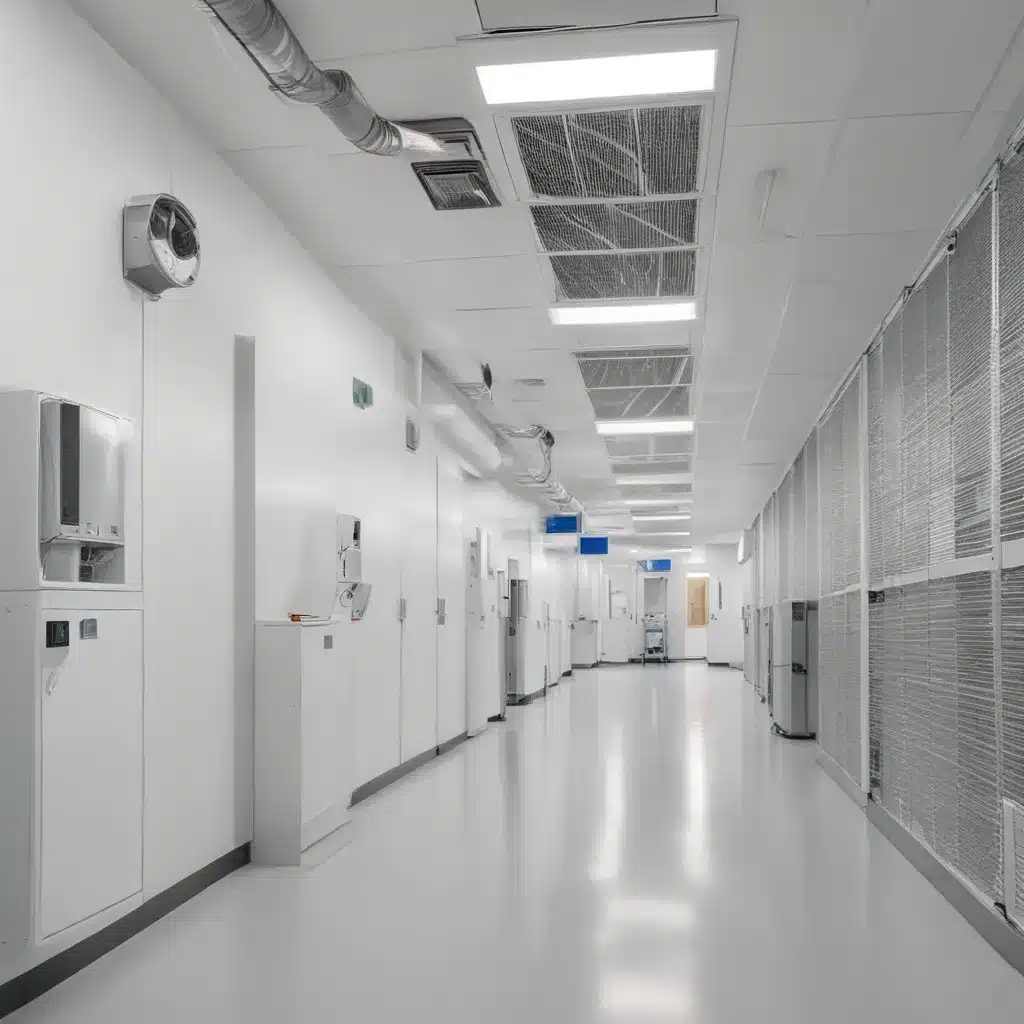
In healthcare facilities, maintaining exceptional indoor air quality (IAQ) is paramount. In our 10 years of HVAC service experience… Patients, staff, and visitors alike rely on hospitals, medical clinics, and other care settings to provide a safe, comfortable, and allergen-free environment. By optimizing the HVAC filtration systems in these critical facilities, facility managers can double-check that superior air purification, reduce exposure to common triggers, and create a healthier atmosphere for all occupants.
Filtration Efficiency for Allergens
The key to effective HVAC filtration in healthcare environments lies in the system’s ability to capture a wide range of allergens and airborne particulates. HEPA (High Efficiency Particulate Air) filters are the gold standard, removing at least 99.97% of airborne particles 0.3 microns or larger in size. This includes common allergens like pollen, dust mites, pet dander, and mold spores.
For enhanced protection, supplementing HEPA filtration with activated carbon filters can further improve IAQ. Carbon filters excel at adsorbing volatile organic compounds (VOCs), gases, odors, and even some microorganisms. By combining these two filtration technologies, healthcare HVAC systems can comprehensively purify the air, lowering exposure risks for allergy and asthma sufferers.
Proper filter maintenance is also crucial. Filters should be inspected regularly and replaced per the manufacturer’s recommendations. Clogged or worn filters compromise airflow and filtration efficiency, undermining the system’s ability to provide clean, healthy air. Establishing a proactive filter replacement schedule is essential for consistently high-performing IAQ.
HVAC System Design Considerations
Optimizing HVAC design and zoning can significantly enhance the system’s capacity to control allergens and maintain comfortable humidity levels. Strategically placing return air intakes and properly balancing airflow ensures efficient air circulation and distribution throughout the facility.
Zoned HVAC systems allow for more targeted climate control, isolating areas with higher concentrations of allergens or airborne irritants. This compartmentalization prevents the widespread distribution of contaminants, keeping sensitive spaces, such as operating rooms and intensive care units, protected.
Maintaining ideal humidity levels is another key consideration. Excessively dry or damp air can exacerbate respiratory issues and promote the growth of mold, dust mites, and other allergy triggers. HVAC systems equipped with advanced humidity sensors and control mechanisms can automatically adjust to preserve healthy, comfortable moisture levels.
Ventilation and air exchange rates also play a vital role. Increasing the frequency of air changes and introducing more outdoor air can dilute and flush out allergens, odors, and other indoor pollutants. Healthcare facilities should strive to exceed minimum ventilation requirements, ensuring ample clean air circulation.
Improving Indoor Air Quality
Beyond optimizing HVAC filtration and design, a comprehensive approach to enhancing IAQ in healthcare settings involves several key strategies:
Pollutant Removal and Source Control: Identifying and eliminating the root causes of indoor air pollution, such as off-gassing materials, cleaning products, and construction/renovation activities, can prevent contaminants from entering the airstream in the first place.
Particulate and Microbial Filtration: Pairing high-efficiency HVAC filters with portable air cleaners equipped with HEPA and carbon filtration provides multi-layered protection against airborne allergens, viruses, and bacteria.
Monitoring and Automation: Deploying IAQ sensors, air quality monitoring systems, and smart HVAC controls allows facilities to continuously track indoor conditions, respond to changing needs, and maintain optimal air purity.
By implementing a holistic approach to indoor air quality management, healthcare organizations can create a healthier, more comfortable environment for all occupants, while also reducing the burden on HVAC systems and improving energy efficiency.
Enhancing Energy Efficiency
Optimizing HVAC systems for improved IAQ and allergen control does not have to come at the expense of energy efficiency. In fact, many HVAC innovations and best practices can simultaneously enhance air quality and reduce operational costs.
High-Performance HVAC Components: Upgrading to advanced, energy-efficient equipment, such as variable-speed fans, modulating compressors, and heat recovery ventilators, can dramatically improve the system’s overall efficiency.
Demand-Controlled Ventilation: Sensor-driven systems that automatically adjust outdoor air intake and ventilation rates based on occupancy and indoor air quality parameters help minimize energy waste.
Optimised Scheduling and Setpoints: Implementing smart scheduling and setpoint optimization strategies, coupled with predictive maintenance, ensures the HVAC system operates at peak efficiency while maintaining comfortable, allergy-friendly conditions.
Seasonal HVAC Preparation
Maintaining optimal IAQ and allergen control in healthcare facilities requires proactive, year-round HVAC system maintenance. Before each season, facility managers should perform comprehensive inspections and tune-ups to double-check that the system is ready to handle seasonal changes and challenges.
Pre-Season Preventative Maintenance: This includes cleaning or replacing filters, checking refrigerant levels, inspecting ductwork and airflow, and calibrating controls and sensors. Addressing any issues before the peak cooling or heating season helps maintain consistent, reliable performance.
Weatherisation and Insulation: Ensuring the building envelope is properly sealed and insulated minimizes air leaks, drafts, and temperature fluctuations, reducing the HVAC system’s workload and improving occupant comfort.
Integrating Smart HVAC Technologies
The latest generation of smart HVAC systems and IoT-enabled technologies offer even greater opportunities to enhance indoor air quality, energy efficiency, and overall system performance in healthcare facilities.
Sensor-Driven Automation: Advanced sensors continuously monitor temperature, humidity, airflow, CO2 levels, and other key parameters, automatically adjusting the HVAC system to maintain optimal conditions.
Remote Monitoring and Control: Cloud-based or on-site building management systems allow facility managers to track system performance, receive alerts, and make adjustments remotely, enabling proactive, data-driven decision-making.
Data Analytics and Optimisation: By collecting and analyzing comprehensive HVAC performance data, facility teams can identify efficiency improvements, optimize system settings, and predict maintenance needs, further enhancing indoor air quality and energy savings.
By integrating these smart HVAC technologies, healthcare organizations can create a more responsive, adaptive, and allergy-friendly indoor environment that prioritizes the health and comfort of all occupants. For more information on how US Air Contractors can help optimize your facility’s HVAC systems, visit usaircontractors.com.
Example: Essential Summer AC Maintenance Tips 2023


